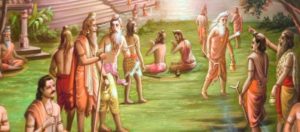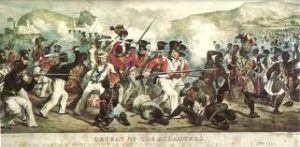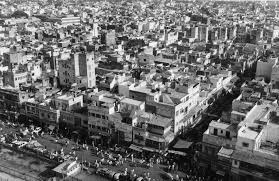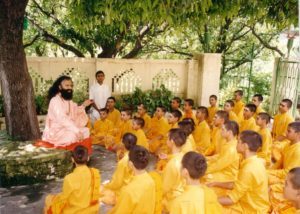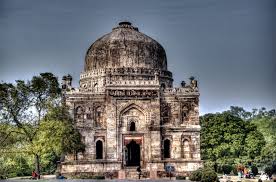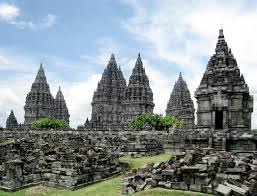Whenever we study history, we study about the wars, politics and the condition of the people. But even Clothing holds an essential part in history. Let’s find out more about the cloth and clothing, a social history.
Clothing: You know the buildings, books, temples and the education system do have a history. But, did you ever wonder that the clothing that you wear also is backed by an interesting history? No, right? In this chapter, we will see how clothing transformed over the years, starting from the colonial rule. Let’s find out more about Clothing.
Sumptuary Laws in France
From about 1294 to the time of the French Revolution in 1789, the people of France strictly followed ‘sumptuary laws’. These tried to control the behaviour of the social inferiors, preventing them from wearing certain clothes. They were also barred from censuring certain foods and beverages and hunting game in certain areas.
According to the ‘sumptuary laws’, only royalty could wear expensive materials like ermine and fur, or silk, velvet, and brocade. Other classes were asked to stay away from anything associated with the aristocracy. The French Revolution ended these distinctions. From now on, both men and women began wearing clothing that was loose and comfortable.
Clothing used as a Notion of Beauty
The end of sumptuary laws did not end all differences in the social strata. The poor could not dress like the rich, nor eat the same food. But, there were no restrictions on clothing now.
Styles of clothing emphasized differences between men and women. In Victorian England, women were groomed from childhood to be docile and dutiful. The notion of an ideal woman implied someone who could bear pain and suffering. Men were hailed to be serious, strong, independent and aggressive.
Norms of clothing reflected these ideals. From childhood, girls were tightly laced up and dressed in stays. The effort was to restrict the growth of their bodies, contain them within small moulds. Even slightly older, girls had to wear tight-fitting corsets.
Women’s Reaction to these Norms
Not everyone accepted these values. By the 1830s, women in England began agitating for democratic rights. As the suffrage movement developed, many began campaigning for dress reform. Women’s magazines described how tight dresses and corsets caused deformities and lines among young girls. Doctors reported that many women were regularly complaining of actual weakness, felt languid, and fainted frequently. Corsets then became necessary to hold up the weakened spine.
Success of Reforms
However, the reformers did not immediately succeed in changing social values. They had to face ridicule and hostility. By the end of the ninetieth century, things started changing. Ideals of beauty and styles of clothing underwent major transformations.
New Times
Introduction of new materials and technologies changed a lot in the clothing segment. The world wars and the new working conditions for women also contributed to the changes.
New Materials
After 1600, trade with India brought cheap, beautiful and easy – to – maintain Indian chintzes within the reach of many Europeans who could now increase the size of their wardrobes. Britain began the mass manufacture of cotton textiles. This became more accessible to a wider section of people in Europe. By the early twentieth century, artificial fibres made clothes cheaper still and easier to wash and maintain.
Effect of Wars on Clothing |Clothing A Social History
Changes in women’s clothing came about due to the two World Wars. Many European women stopped wearing jewellery and luxurious clothes. There was a rise in the number of women workers. They wore a working uniform. By the twentieth century, new schools for children emphasized the importance of plain clothing. As women took to sports, they had to wear clothes that did not hamper movement.
Transformations in Colonial India
The colonial period saw significant changes in male and female clothing in India. A section of the society wore western clothes. Another section wore traditional clothes. Both the groups had different notions.

British Rule and Dress Codes in India
In different cultures, specific items of clothing often convey meanings. This frequently leads to misunderstanding and conflict. Styles of clothing in British India changed through such conflicts. When European traders first began frequenting India, they were distinguished from the Indian ‘turban wearers’ as the ‘hat wearers’. The turban in India not only protected from the heat but was a sign of respectability. Thus, Indian did not want to remove the turbans.
In the Western tradition, one had to remove the hat before social superiors as a sign of respect. This cultural difference created misunderstanding. Wearing of shoes created another conflict. In 1824-1828, Governor-General Amherst insisted that Indians take their shoes off as a sign of respect when they appeared before him. The Indians did not follow this.
Why did Men dressed differently than Women?
Men had to go out to work and interact with their western bosses and native subordinates. Hence, these men would wear western clothes to please their western bosses and carry favour with them. The women had not to go to work. Therefore, they did not need any new dresses.
Process of Designing the National Dress
By the late nineteenth century, Indians began devising cultural symbols that would express the unity of the nation. There are a few significant movements that encouraged the spirit of nationalism amongst Indians.
The Swadeshi Movement | Clothing A Social History
The Industrial Revolution in Britain mechanized the spinning and weaving and greatly increased the demand for raw materials such as cotton and indigo. Hence, this changed India’s status in the world economy. In the middle of the 20th century, large numbers of people began boycotting British or mill-made cloth and adopting khadi, even bough it was coarser, more expensive and difficult to obtain.
The Swadeshi movement developed in reaction to this measure. People were urged to boycott British goods of all kind and start their own industries for the manufacture of goods such as matchboxes and cigarettes. Though many people called to the cause of nationalism at this time, it was almost impossible to compete with cheap British goods that had flooded the market. The experiment with Swadeshi gave Mahatma Gandhi important ideas about using cloth as a symbolic weapon against British rule.
Solved Example
Q1. Why couldn’t everyone wear Khadi?
Sol: Mahatma Gandhi’s dream was to clothe the whole nation in khadi. Though he succeeded using khadi as a source to inspire the Indian people but there were many different opinions. Some of the reasons why everyone couldn’t wear Khadi include:
The British machine-made clothes were much cheaper as compared to khadi. The wealthy Parsi’s of western India did not want to give up their western clothes. The caste system in India was very rigid and western dress style was for all. Hence, many people adopted it for self-respect and equality.
